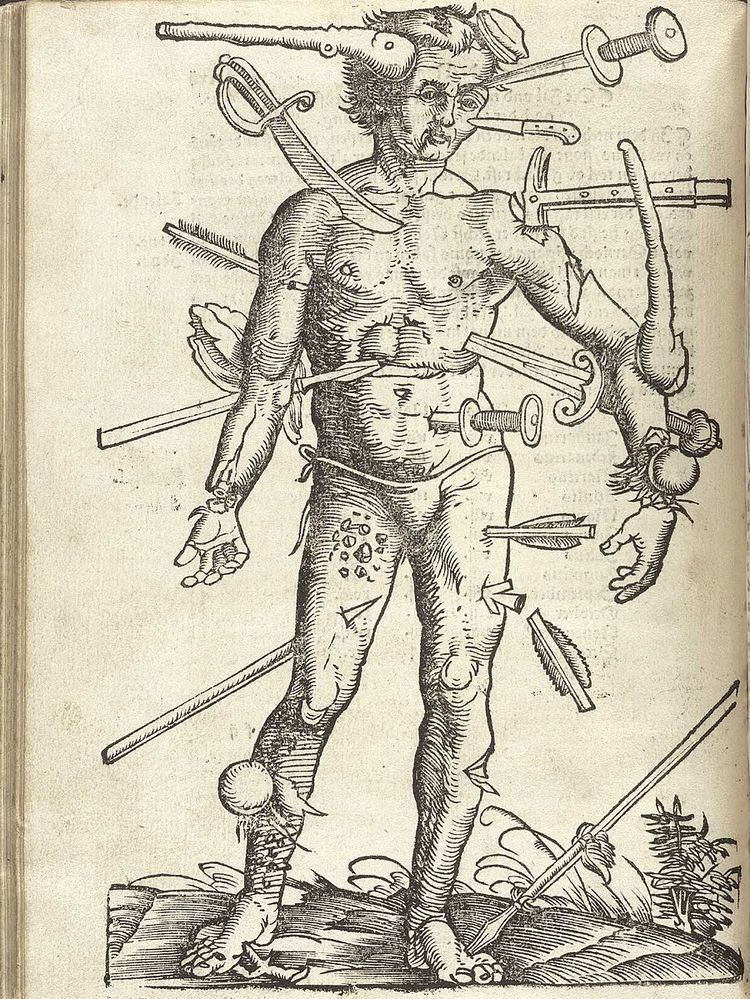 | ||
Wound Man is an illustration which first appeared in European surgical texts in the Middle Ages. The illustrations were an important anatomical guide to potential injuries for surgeons or wound doctors at the time. Wound man has since become a recognisable figure in popular culture.
Contents
Description
The wound man laid out schematically various wounds a person might suffer in battle or in accidents, often with surrounding or accompanying text stating treatments for the various injuries. The wound man first appeared in print in Johannes de Ketham's Fasciculus Medicinae (Venice, 1491). Wound man was used often in surgical texts to demonstrate the possible wounds that a physician would be called upon to treat throughout the sixteenth century and even into the seventeenth century.
The wound man shows various injuries that a person of the time might receive via war, accident or epidemic. Despite these injuries the wound man is still depicted as standing defiantly alive. The purpose of wound man is not to appear as a threatening figure or to make the viewer fearful of his injuries, but rather reveal potential cures and medical treatments available at the time.
Ketham's Fasciculus Medicinae was the first printed book to contain anatomic illustrations. The wound man was included in all 25 editions of the Fasciculus and translated into Italian, Spanish, and Dutch. In some cases, floating text boxes appear around the figure to mark particular maladies and cures.
In popular culture
Although advancements in medical knowledge meant that physicians no longer rely on illustrations such as wound man, he continues to be referenced in popular culture:
The constant invocation of the wound man in surgical treatises for over 300 years shows the capacity of this image instantly to bring the reader into the gruesome yet serious space of the surgical professional. But it also speaks to the ability of the wound man to capture the attention of any reader who stumbled across him. As his recent reappearance in the NBC TV series Hannibal suggests, the morbid wonder he encapsulates still holds true for viewers today.
In the 1980 novel Red Dragon by Thomas Harris, it is mentioned that Will Graham was tipped off to the fact that Hannibal Lecter was a murderer from this diagram, and a further reference to the diagram is made by the character Clarice Starling in the sequel novel Hannibal.
The Wound Man is also referenced in season 1, episode 6 of NBC's Hannibal TV series in 2013, and again visually and by name in season 2, episode 7 of Hannibal.
